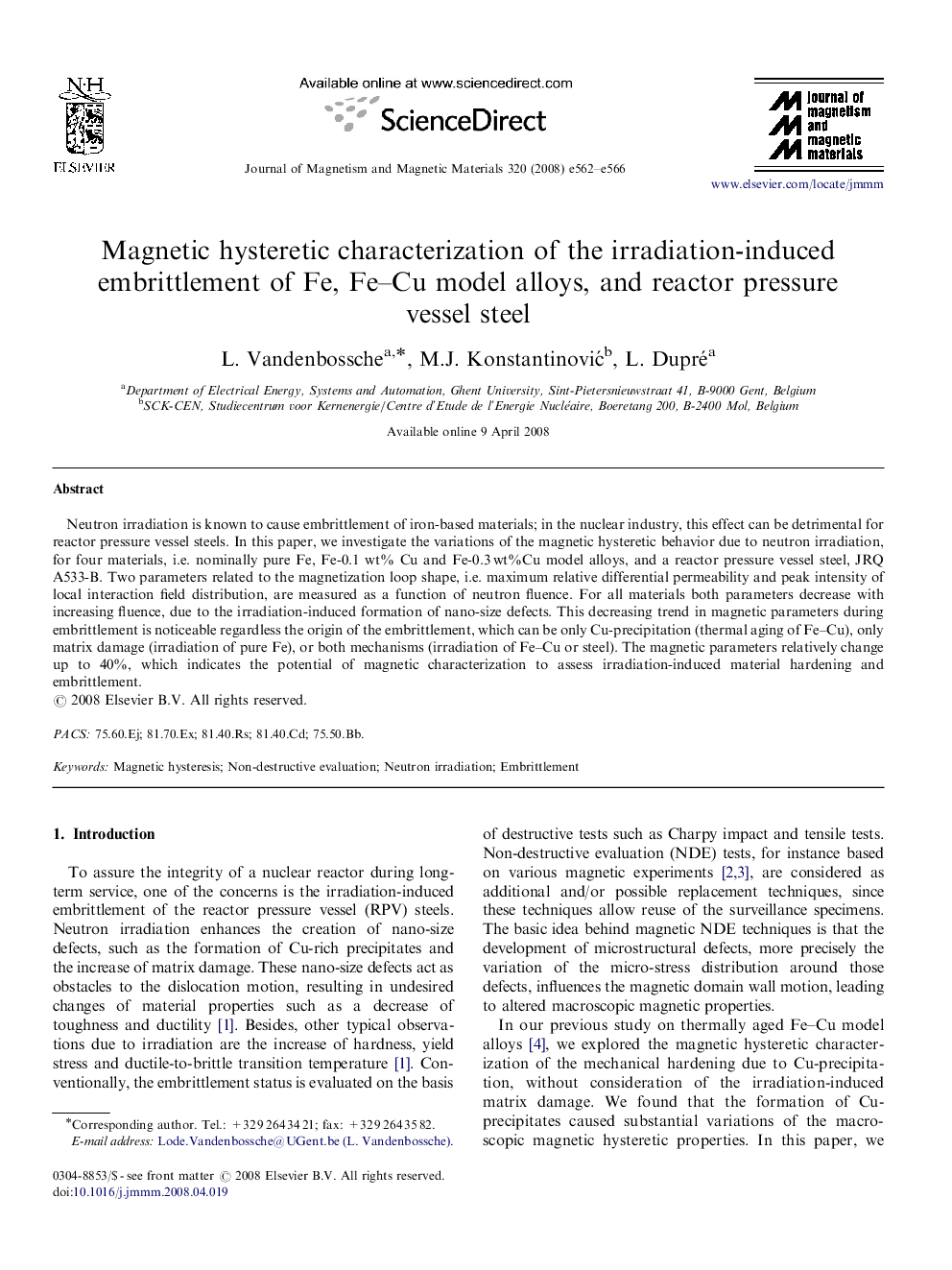| Article ID | Journal | Published Year | Pages | File Type |
|---|---|---|---|---|
| 1803525 | Journal of Magnetism and Magnetic Materials | 2008 | 5 Pages |
Neutron irradiation is known to cause embrittlement of iron-based materials; in the nuclear industry, this effect can be detrimental for reactor pressure vessel steels. In this paper, we investigate the variations of the magnetic hysteretic behavior due to neutron irradiation, for four materials, i.e. nominally pure Fe, Fe-0.1 wt% Cu and Fe-0.3 wt%Cu model alloys, and a reactor pressure vessel steel, JRQ A533-B. Two parameters related to the magnetization loop shape, i.e. maximum relative differential permeability and peak intensity of local interaction field distribution, are measured as a function of neutron fluence. For all materials both parameters decrease with increasing fluence, due to the irradiation-induced formation of nano-size defects. This decreasing trend in magnetic parameters during embrittlement is noticeable regardless the origin of the embrittlement, which can be only Cu-precipitation (thermal aging of Fe–Cu), only matrix damage (irradiation of pure Fe), or both mechanisms (irradiation of Fe–Cu or steel). The magnetic parameters relatively change up to 40%, which indicates the potential of magnetic characterization to assess irradiation-induced material hardening and embrittlement.
